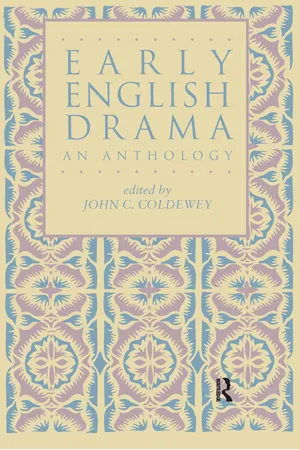The text of the Digby Mary Magdalene survives in Oxford at the Bodleian Library, in fols. 95r–145r of MS. Digby 133, the manuscript compilation briefly described in the introduction to the Digby Conversion of St. Paul. Like the Conversion, this play also bears the initials of Myles Blomefylde, its earliest known owner, on its first leaf (95r). The handwriting of Mary Magdalene and other manuscript evidence point to the Digby copy being made around 1515–1525, although its language indicates a date of composition somewhat before then, probably late in the fifteenth century. The dialect suggests an East Anglian origin, perhaps in Norfolk. Myles Blomefylde’s ownership of the play introduces the real possibility that its theatrical career extended into Chelmsford, Essex, during the third quarter of the sixteenth century. Further particulars regarding the provenance of the Digby manuscript and its implications for the stage history of the Digby plays are discussed in the introduction to the Digby Conversion of St. Paul.
It is no exaggeration to say that the Digby Mary Magdalene is the most extravagant play in the whole of early English drama. Over 2100 lines long—almost twice as long any other non-cycle play except The Castle of Perseverance—it dramatizes the life and times of Mary Magdalene as described in The G...
